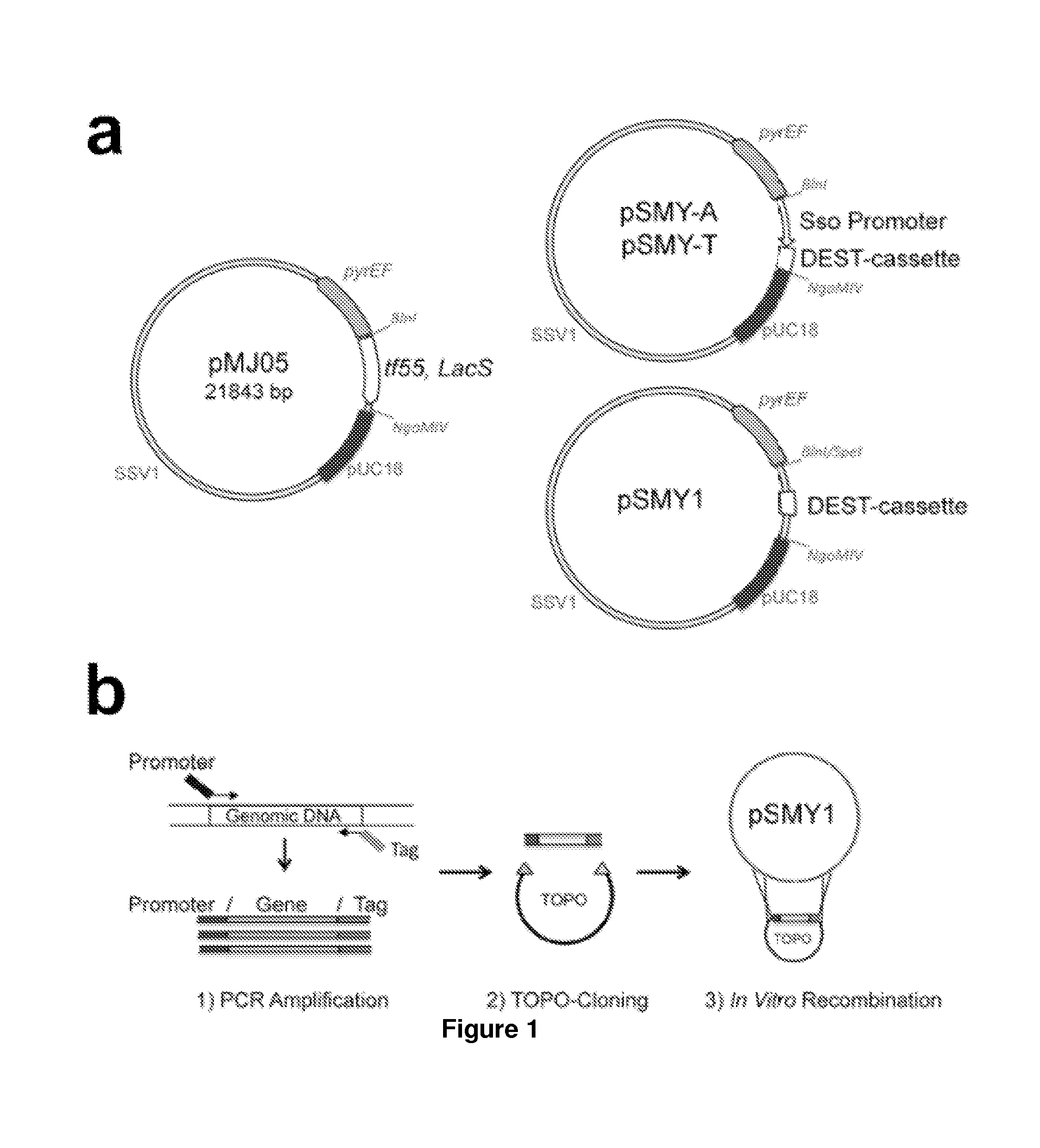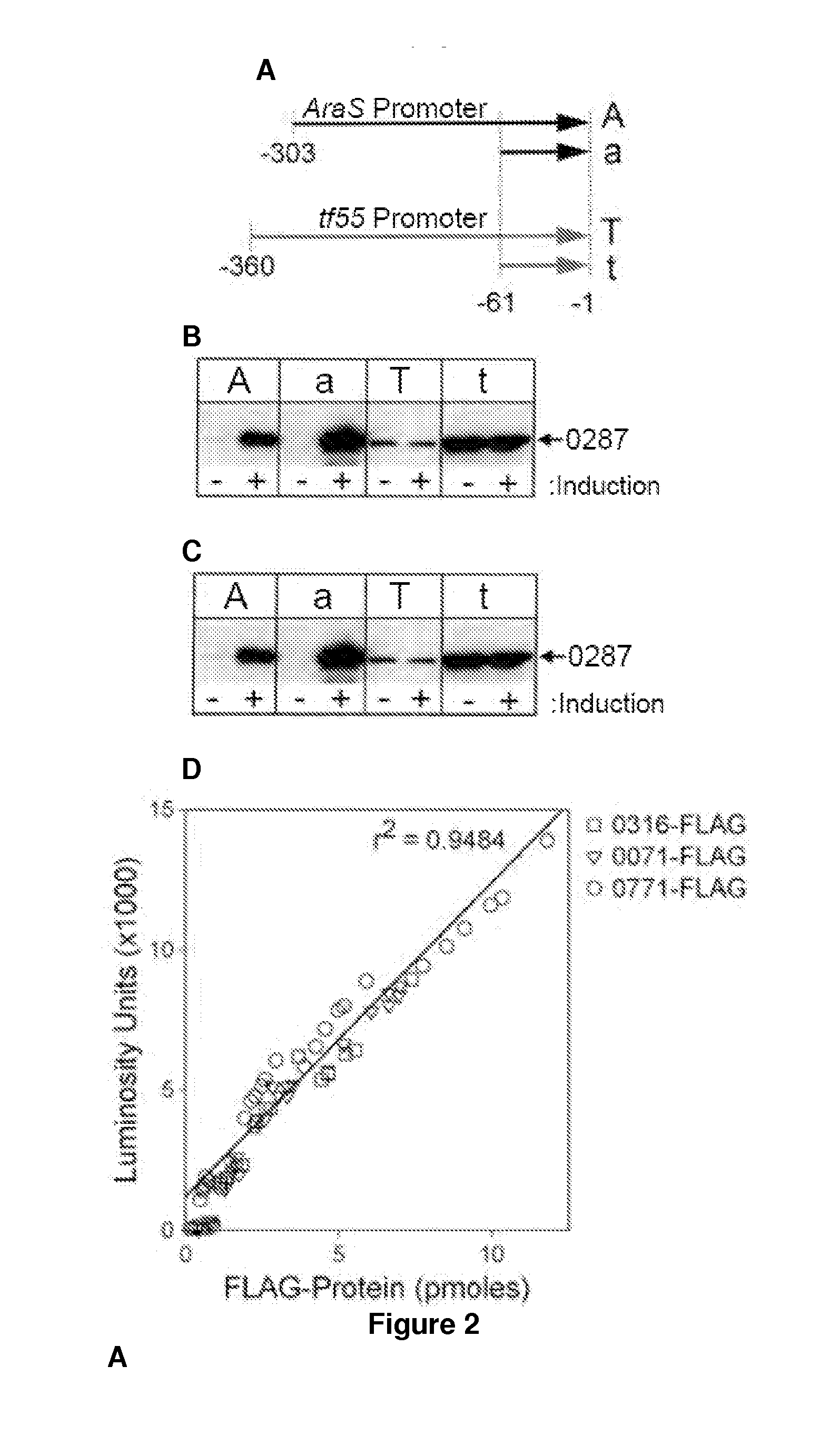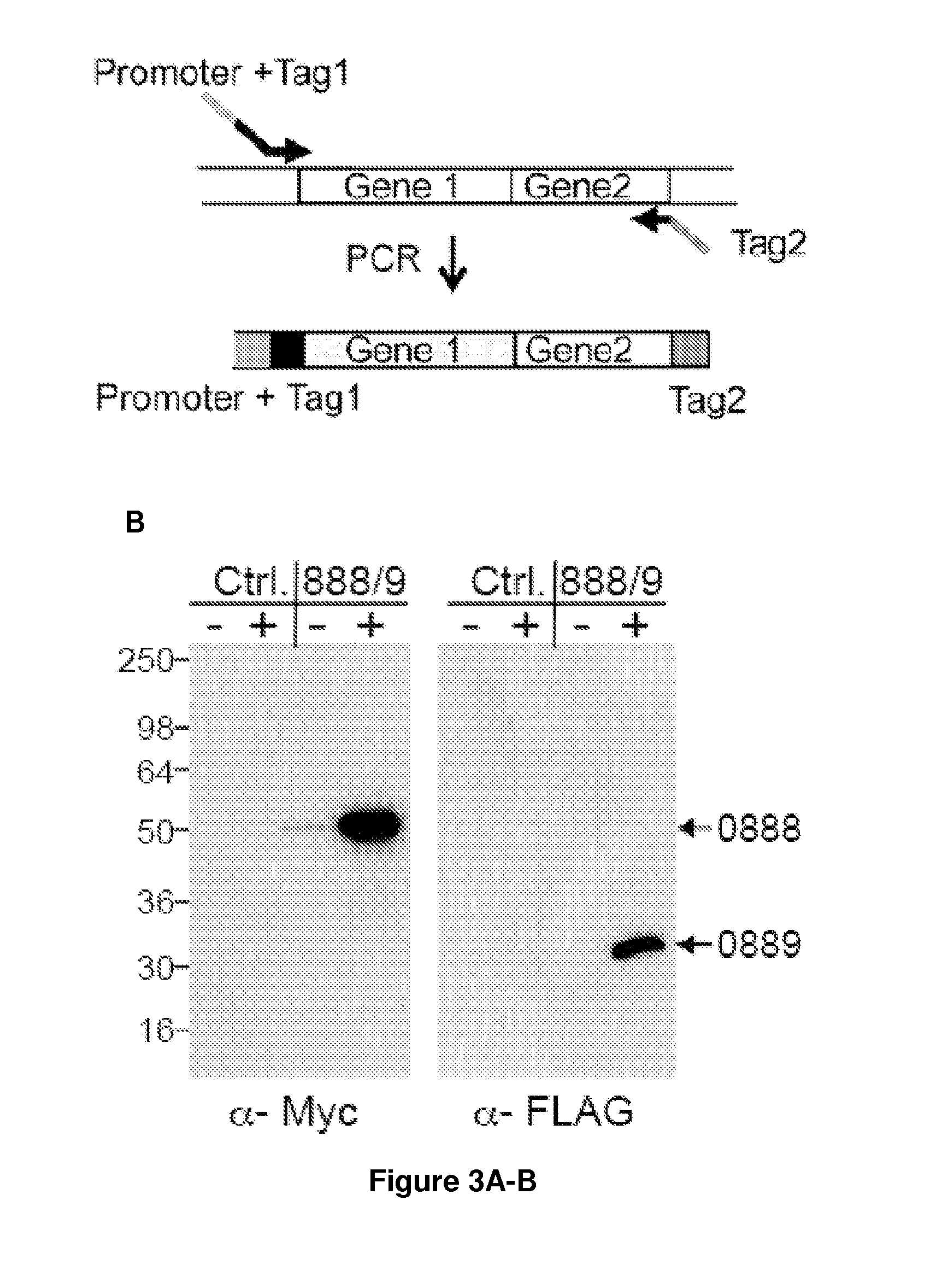Nucleic acids useful for integrating into and gene expression in hyperthermophilic acidophilic archaea
- Summary
- Abstract
- Description
- Claims
- Application Information
AI Technical Summary
Benefits of technology
Problems solved by technology
Method used
Image
Examples
example 1
Recombinant Acid / Heat Stable Cellulases in Sulfolobus solfataricus
[0111]Potential applications for acid / thermal-stable enzymes in industrial processes have long been recognized and initiated much interest in acidophilic and hyperthermophilic microbes such as the archaeal Sulfolobales. Here we report the development of an efficient and rapid means to produce recombinant acid / thermal-stable proteins that are highly resistant to detergent denaturation at high levels with Sulfolobus solfataricus. Building on previous works with Sulfolobus vectors, we have developed a PCR-based cloning approach to modify, express, target localization, and purify recombinant proteins from Sulfolobus solfataricus. Novel vectors are used here to generate over 80 Sulfolobus expression constructs with various affinity tags for detection, quantification, and purification. We define minimal promoters that can be incorporated into PCR primers to facilitate inducible protein expression over a >1500 fold range a...
example 2
Recombinant Acid / Heat Stable Proteases in Sulfolobus solfataricus
[0139]We have isolated active acid and heat stable extracellular protease from Sulfolobus solfataricus. The enzyme is an active protease in the 0.025-0.25% v / v H2SO4 at 80° C. isolated from the extracellular fraction of active cell cultures (FIG. 9). In some embodiments, the protease is fused to an epitope or other purification tags such as polyhistidine or FLAG among others targeted to the extracellular compartment as described herein. These enzymes can be produced recombinantly in Archaea as described herein.
[0140]While the present invention has been described with reference to the specific embodiments thereof, it should be understood by those skilled in the art that various changes may be made and equivalents may be substituted without departing from the true spirit and scope of the invention. In addition, many modifications may be made to adapt a particular situation, material, composition of matter, process, proc...
PUM
| Property | Measurement | Unit |
|---|---|---|
| Temperature | aaaaa | aaaaa |
| Temperature | aaaaa | aaaaa |
| Temperature | aaaaa | aaaaa |
Abstract
Description
Claims
Application Information
 Login to View More
Login to View More - R&D
- Intellectual Property
- Life Sciences
- Materials
- Tech Scout
- Unparalleled Data Quality
- Higher Quality Content
- 60% Fewer Hallucinations
Browse by: Latest US Patents, China's latest patents, Technical Efficacy Thesaurus, Application Domain, Technology Topic, Popular Technical Reports.
© 2025 PatSnap. All rights reserved.Legal|Privacy policy|Modern Slavery Act Transparency Statement|Sitemap|About US| Contact US: help@patsnap.com



